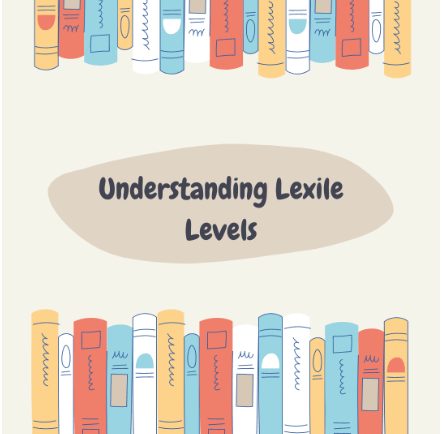
A Guide to the Lexile Measure for Readers
Share
If you’ve read our recent blog posts, you may have encountered the term “Lexile Level.” You may have heard of Lexile Levels before, or this may be your first time hearing of them. Whoever you are, we created this blog post to help you better understand what Lexile Levels are, why they were created, and how they can help you as a reader.
What are Lexile Levels?
The Lexile Framework was created by MetaMetrics, an educational assessment and research team. It serves two functions: a scientific measure of a student’s reading ability level and a text’s difficulty level. Based on more than 30 years of rigorous research, the measure is used by schools, teachers, parents, and students as a tool to help find books appropriate for students at various reading levels.
Why was the Lexile Framework created?
The Lexile Measure was created by educational researchers A. Jackson Stenner Ph.D. and Malbert Smith Ph.D. Together, they formed MetaMetrics, an educational assessment company with a mission to make test scores more actionable. Since their founding in 1984, MetaMetrics received various grants from the National Institute of Child Health and Human Development to support their research on reading theory. In 1989, MetaMetrics introduced the Lexile Measure to provide a scientific approach to measuring reading ability and text difficulty.
How do Lexile Levels work?
As previously mentioned, Lexile Levels can be used to assess a student’s reading ability and a text’s difficulty level.
Lexile codes are usually followed by a number and the letter “L”. The lower the number is, the lower the complexity level of the text while the higher the number is, the greater the text’s complexity level is. For instance, Dr. Suess’ Green Eggs and Ham has a Lexile score of 210L while Dotsoyevsky’s Crime and Punishment, typically read at a high school or college level, has a Lexile score of 990L.
The same applies when using Lexile Levels to assess a student’s reading ability: higher numbers denote a greater reading level while lower numbers indicate a lower reading level. For example, a student with a Lexile Level of 730L has a higher reading level than a student with a Lexile Level of 340L.
Occasionally, you may see some additional letters in front of a Lexile number like “BR” or “AD”. For instance, one of the books we listed in our recent blog post, The Girl with Big, Big Questions, had a Lexile level of AD 660L. Here is what these letters mean:
Finding a Book’s Lexile Level:
The easiest way to find a book’s Lexile level is to use the Lexile Find a Book tool administered by the official Lexile website. The engine allows you to type in any book’s name and quickly find its Lexile level.
Finding Your Student’s Lexile Level:
A student can receive their Lexile level in two ways: by taking a school-administered Scholastic Reading Inventory test (SRI) or by taking a standardized reading test that converts the score to a Lexile measure.
The Lexile measure can be a great way to help you learn more about yourself as a reader and find books at your reading level. We hope this guide helped you get a better understanding of how the Lexile measure works!